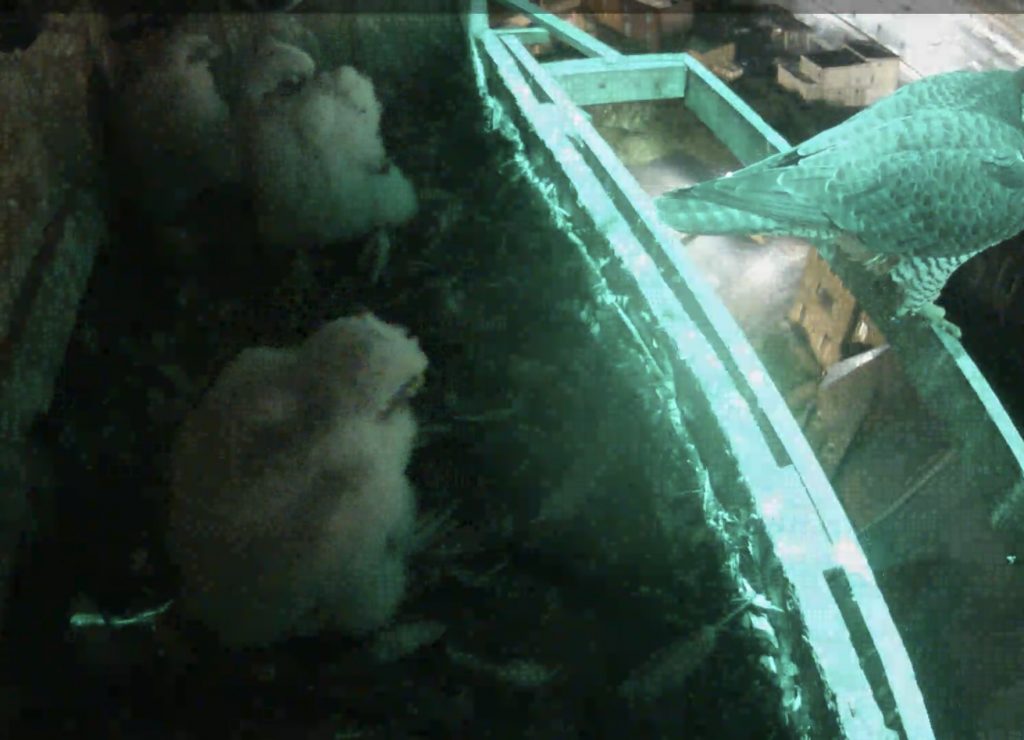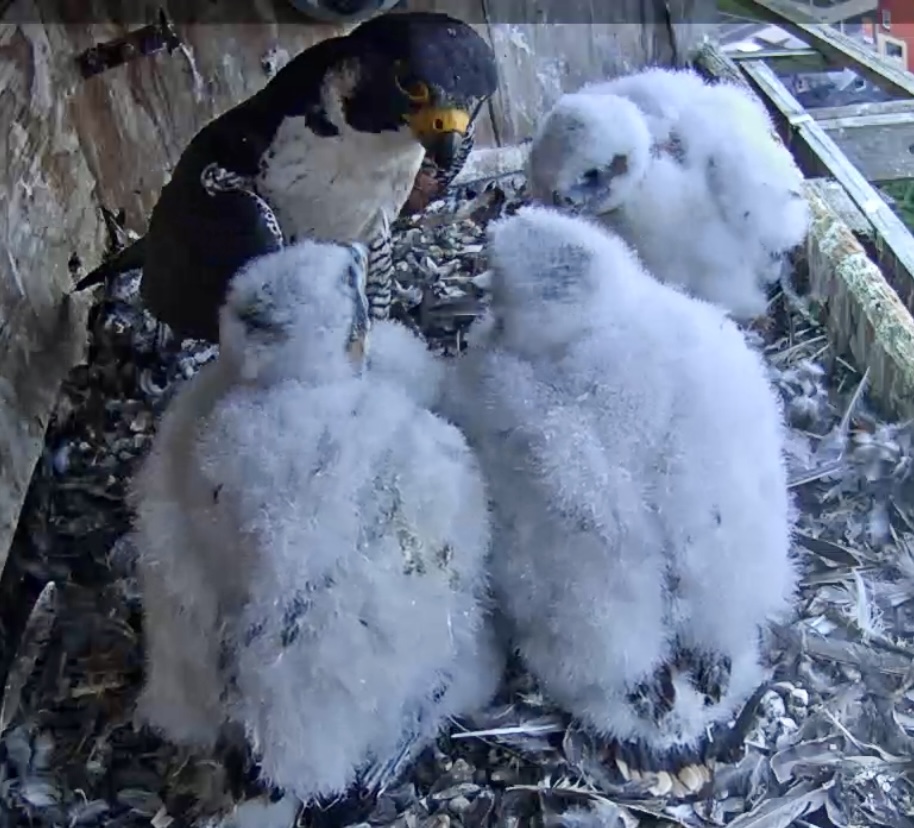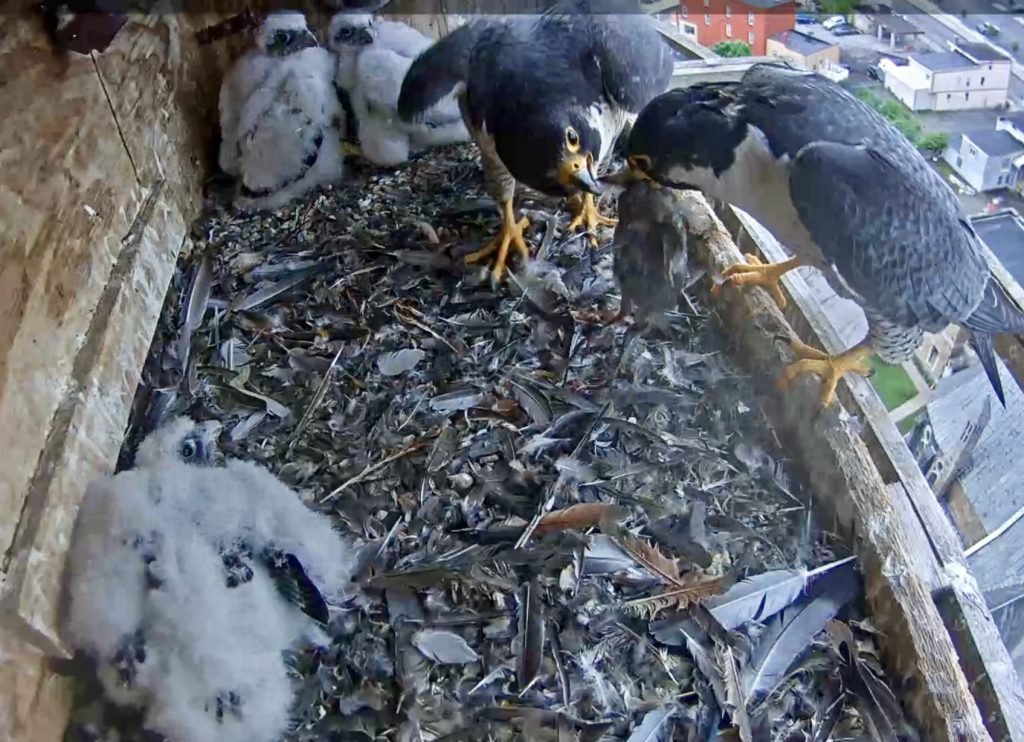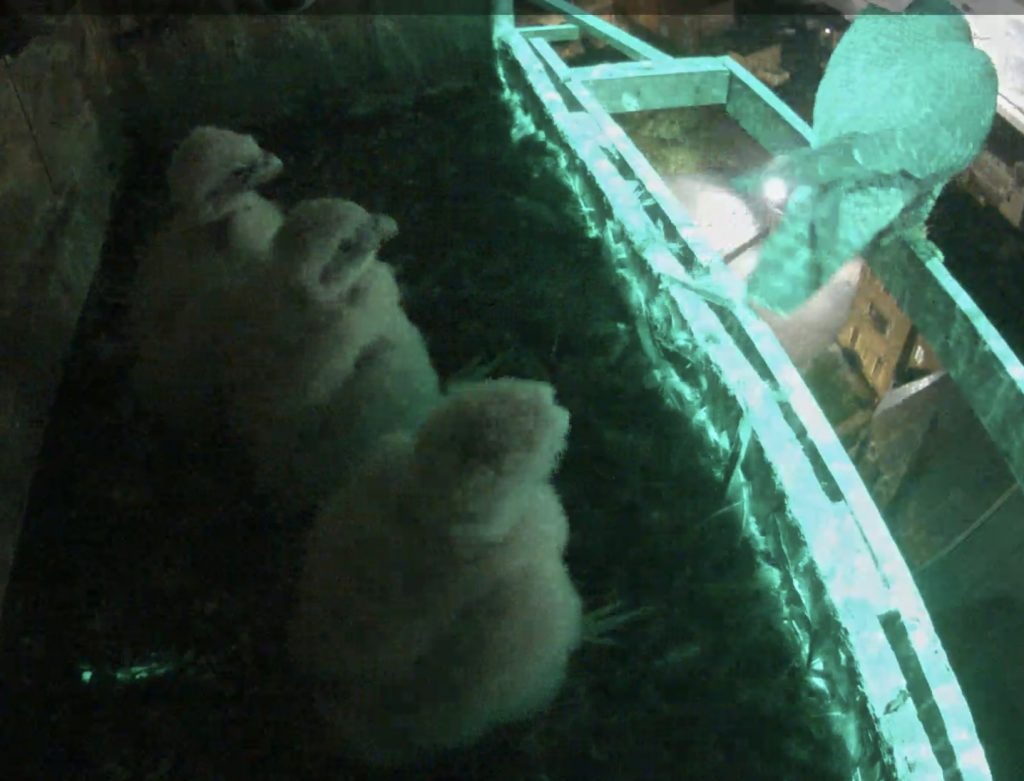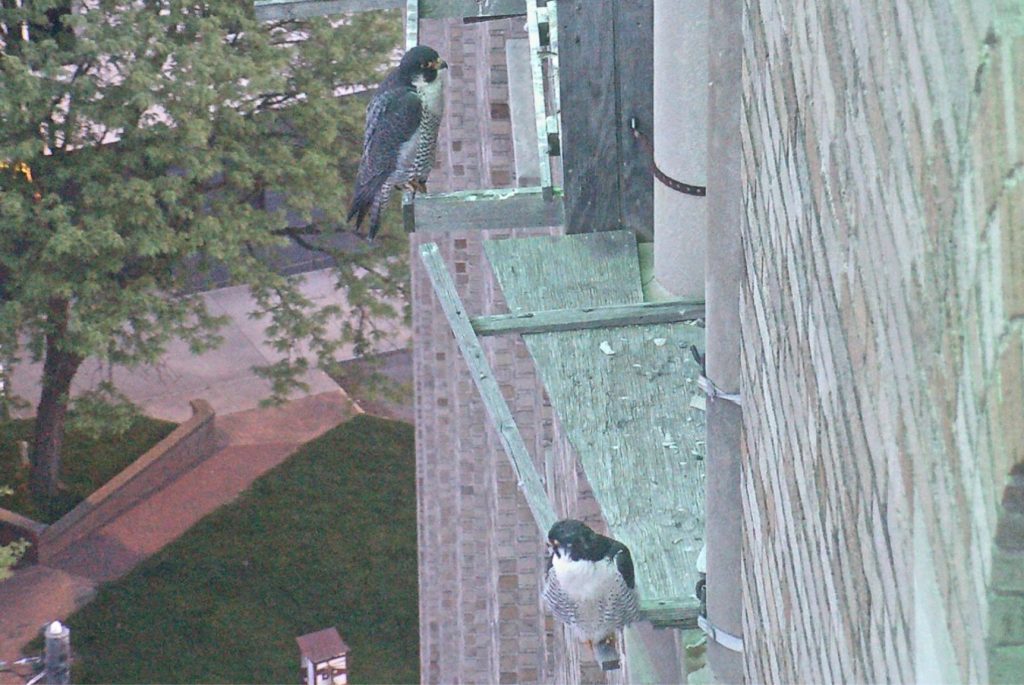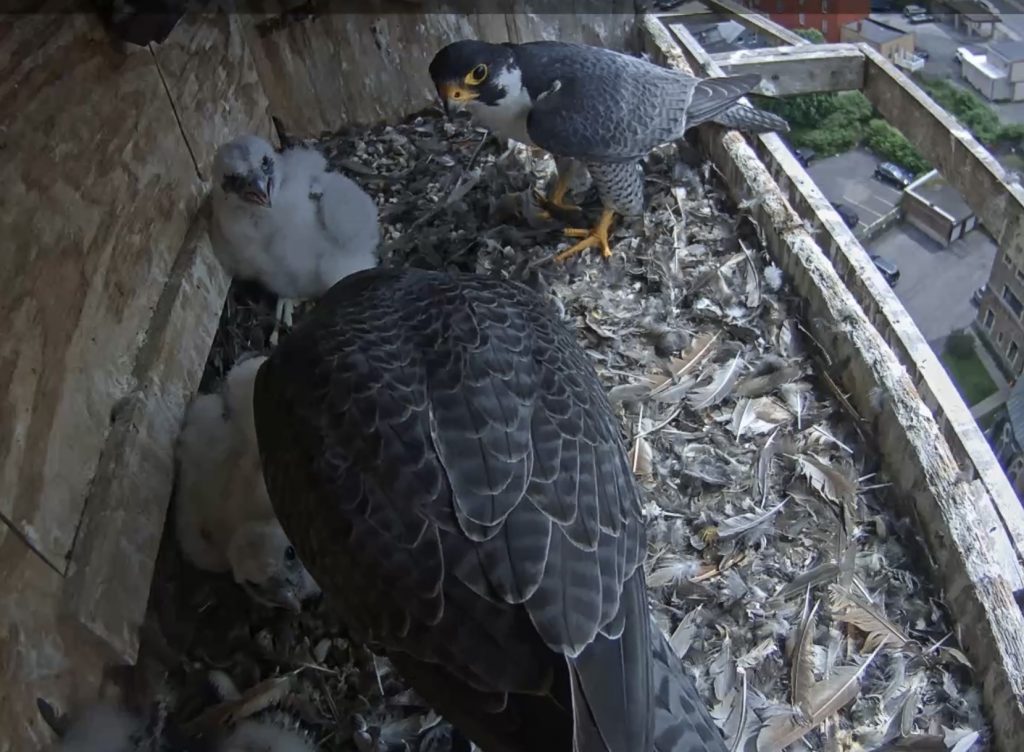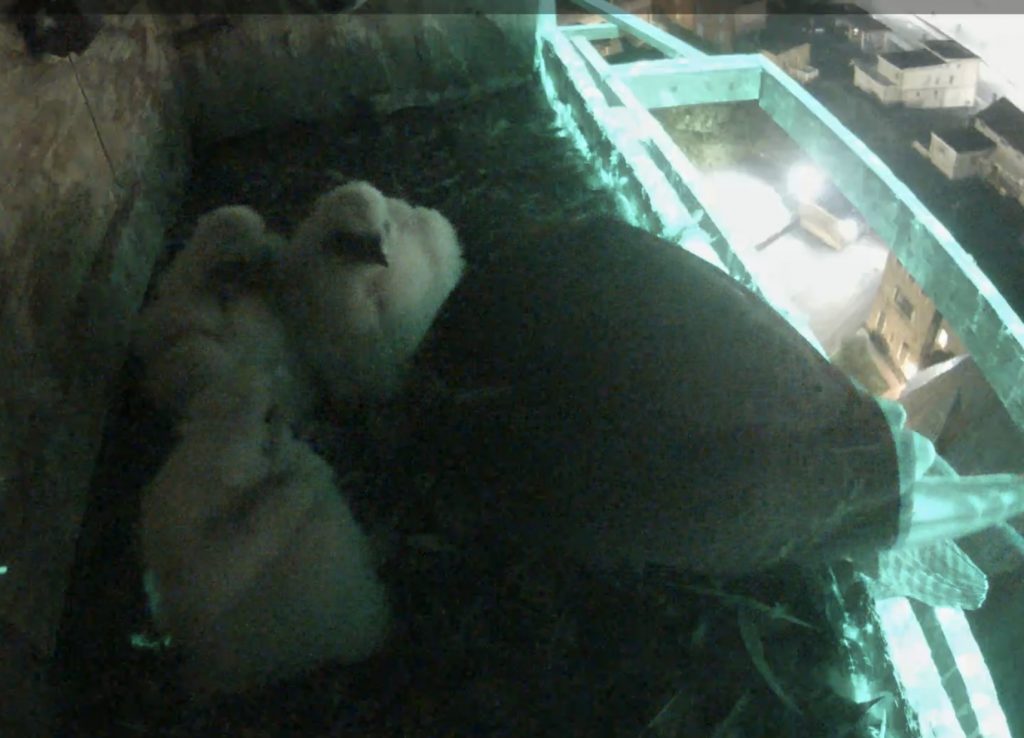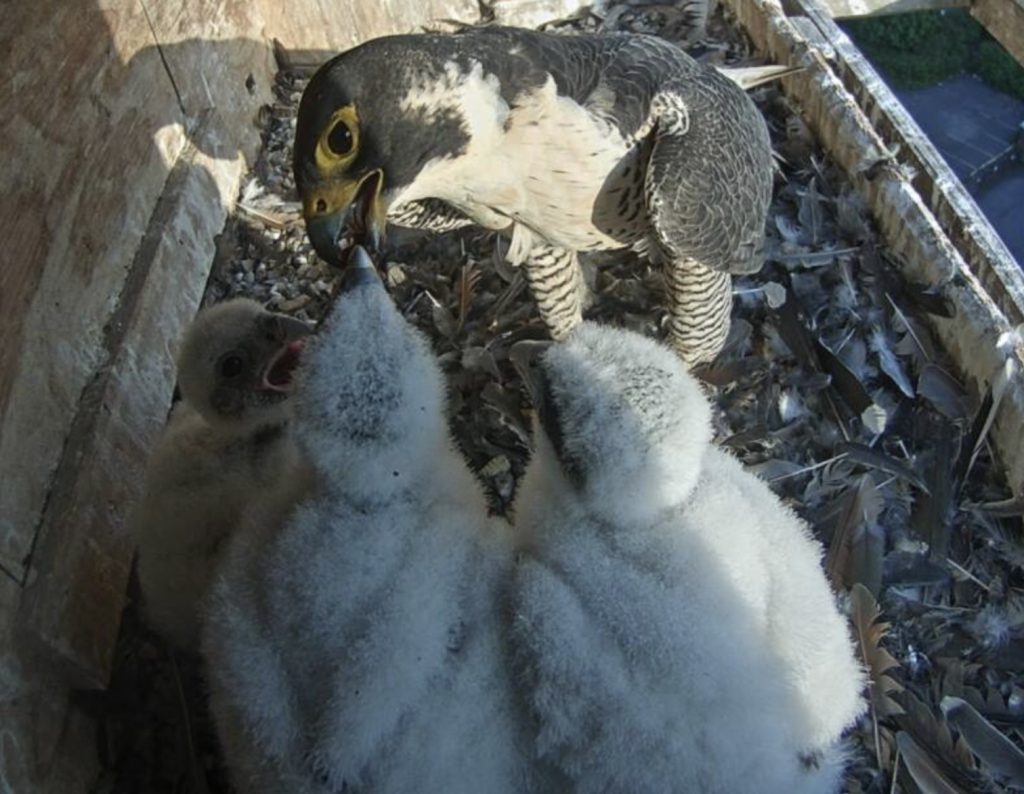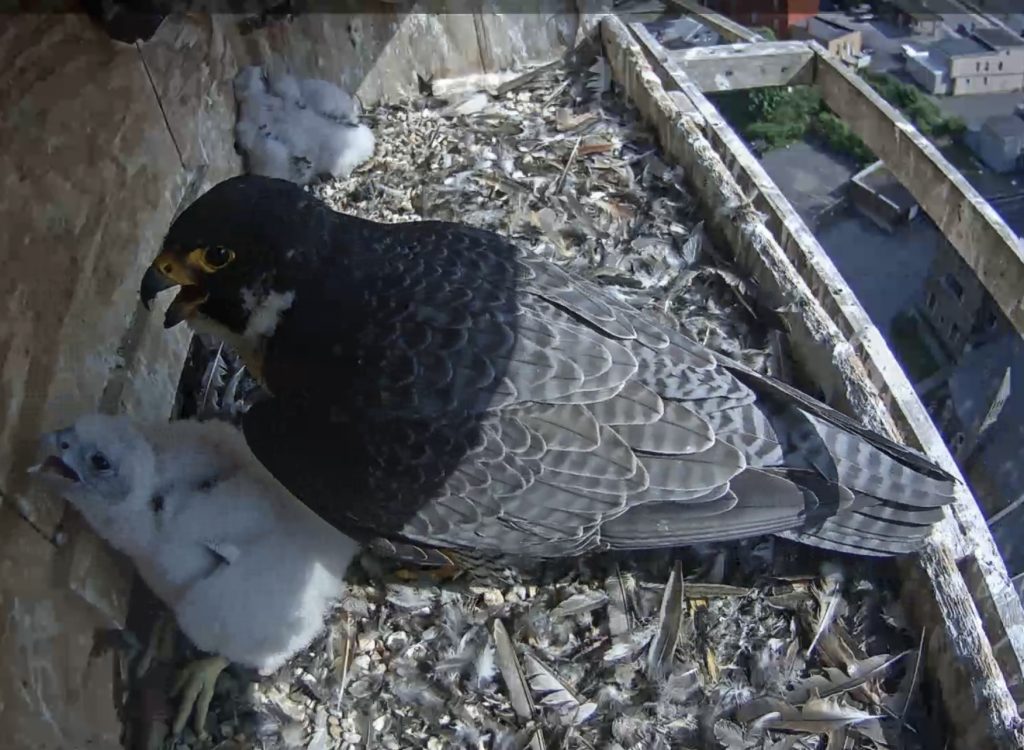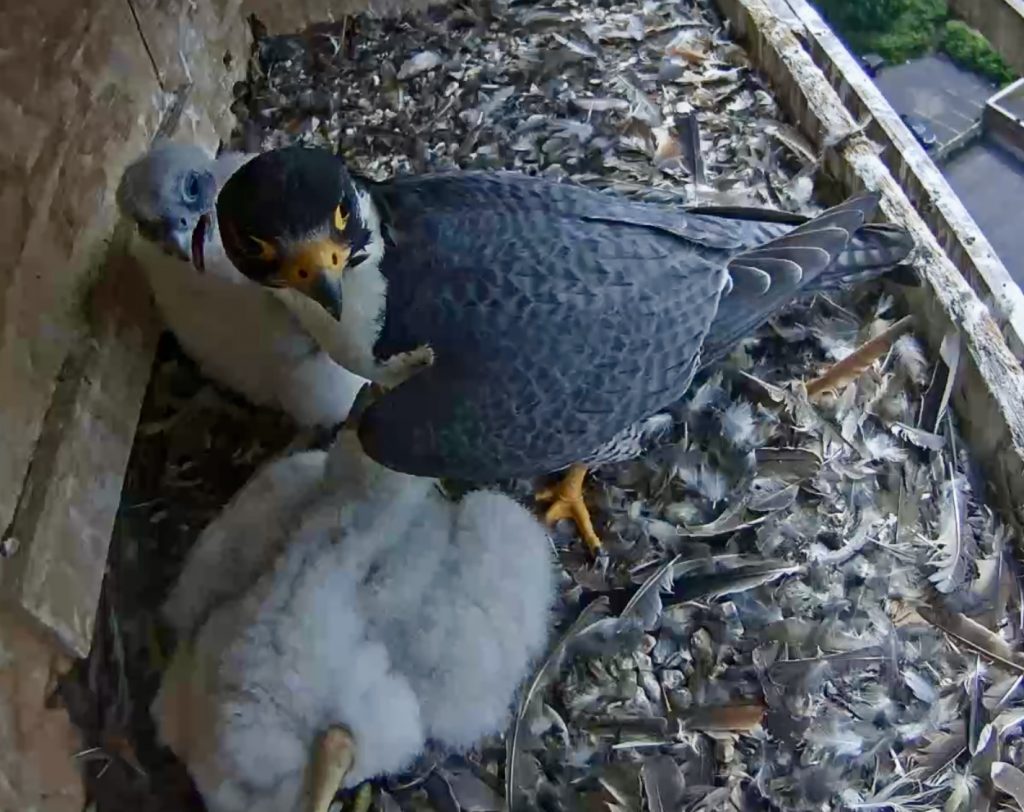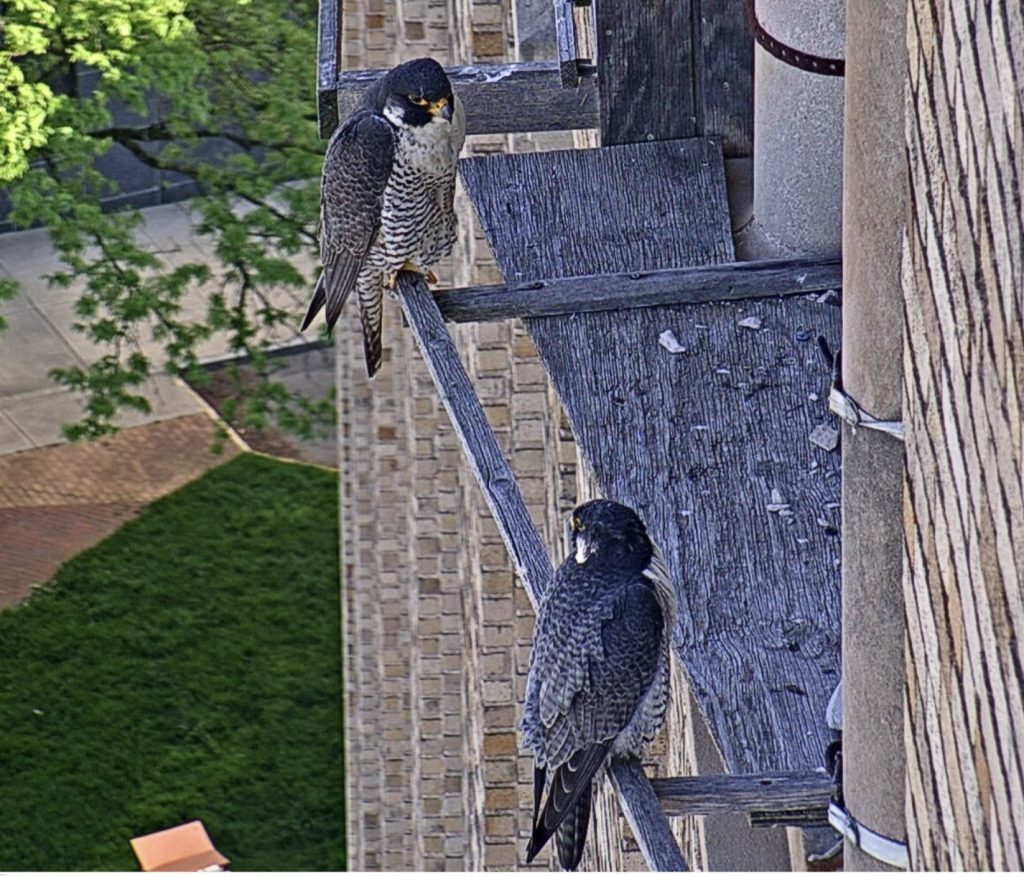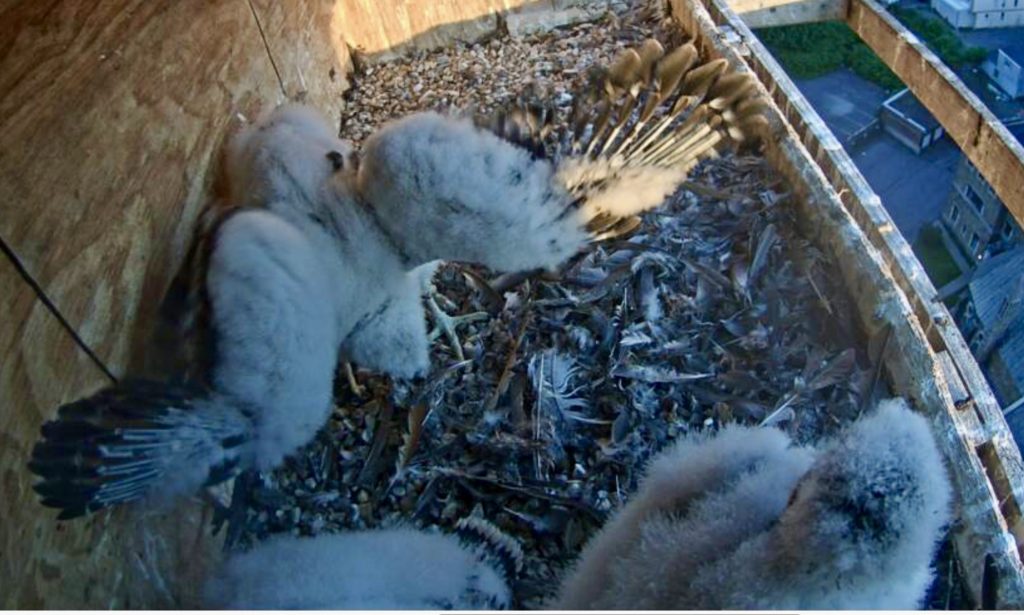
Update for Friday, May 24, 2024
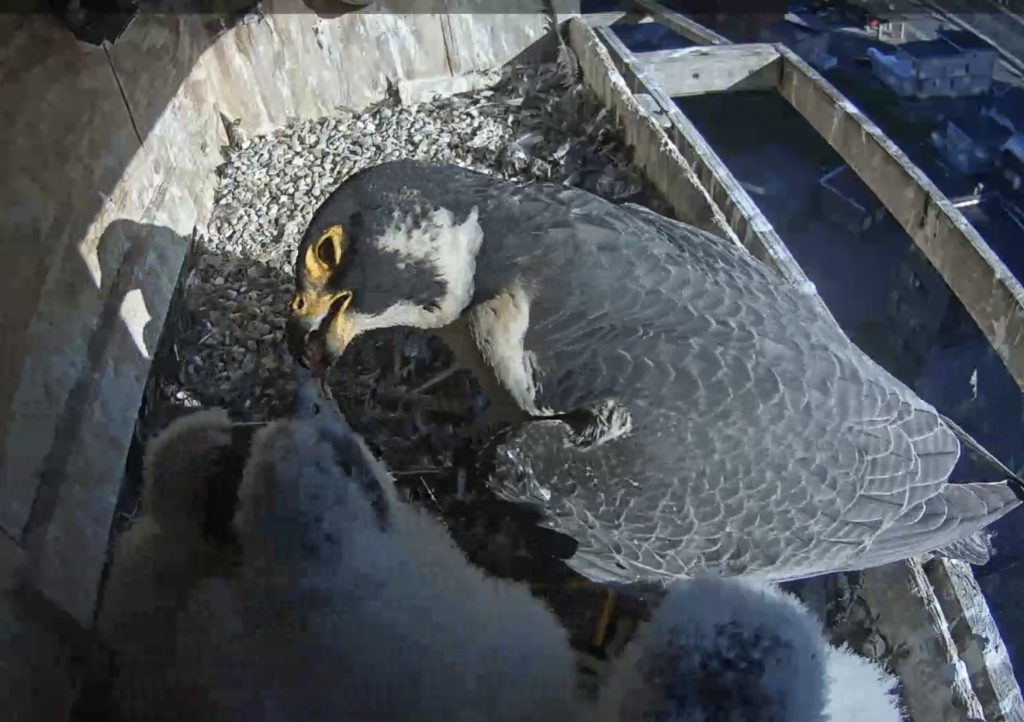
The process of feather growth in nestling Peregrine Falcon is a crucial part of their development, transforming them from helpless hatchlings into fledglings ready for flight. This process begins shortly after hatching and involves several stages, each critical for the young falcons’ survival and eventual independence. When Peregrine chicks hatch, they are covered in a layer of soft, white down feathers. These down feathers provide insulation, keeping the nestlings warm, but they are not suitable for flight. At this stage, the chicks are highly dependent on their parents for warmth, protection, and food. As the juvenile feathers grow, they gradually replace the initial down feathers. The sheath surrounding each new feather breaks down, allowing the feather to unfurl and take its full form. These juvenile feathers are darker and more structured than the down, providing better protection and laying the groundwork for future flight capabilities. By the time the nestlings are about five to six weeks old, they have developed a full set of juvenile feathers, including the critical flight feathers on their wings and tail. The flight feathers, which are stronger and more aerodynamically shaped, are essential for flying. These feathers are meticulously preened by the nestlings to ensure they are in optimal condition.
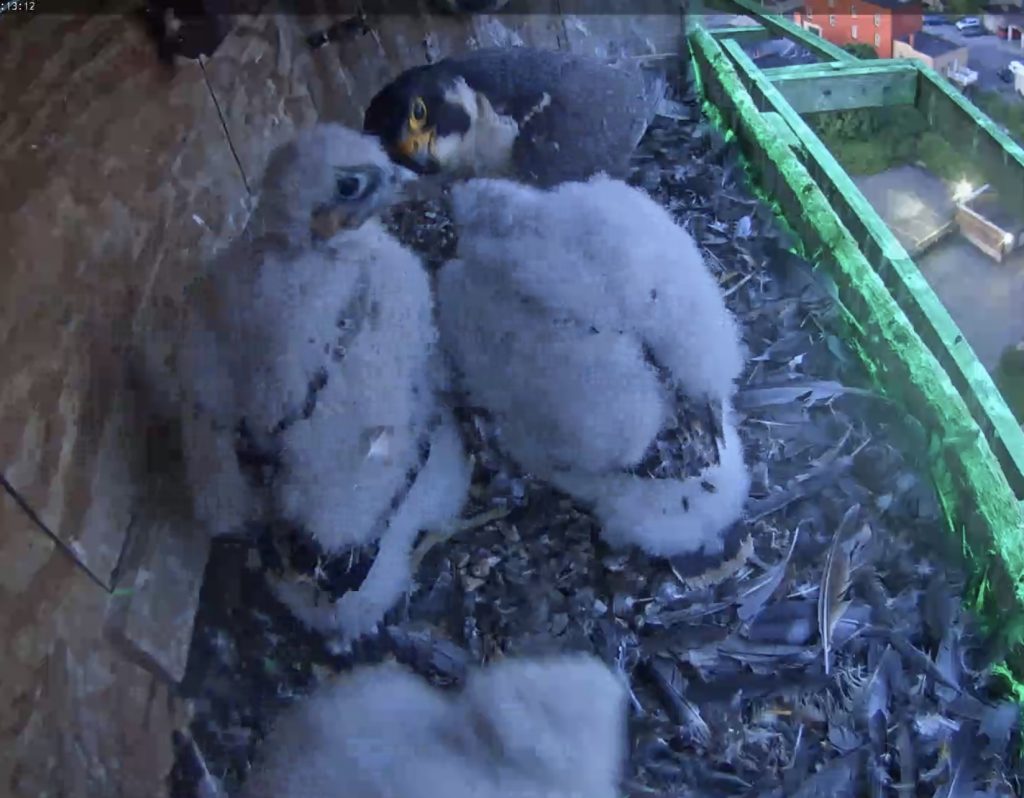
The process of feather growth in nestling Peregrine Falcons is a meticulously timed and energy-intensive phase of their early life. From the initial insulating down to the development of robust juvenile feathers, each stage prepares the young falcons for the critical transition from nestbound chicks to adept aerial hunters. This transformation is essential for their survival and marks the beginning of their journey as one of the world’s most formidable avian predators.
